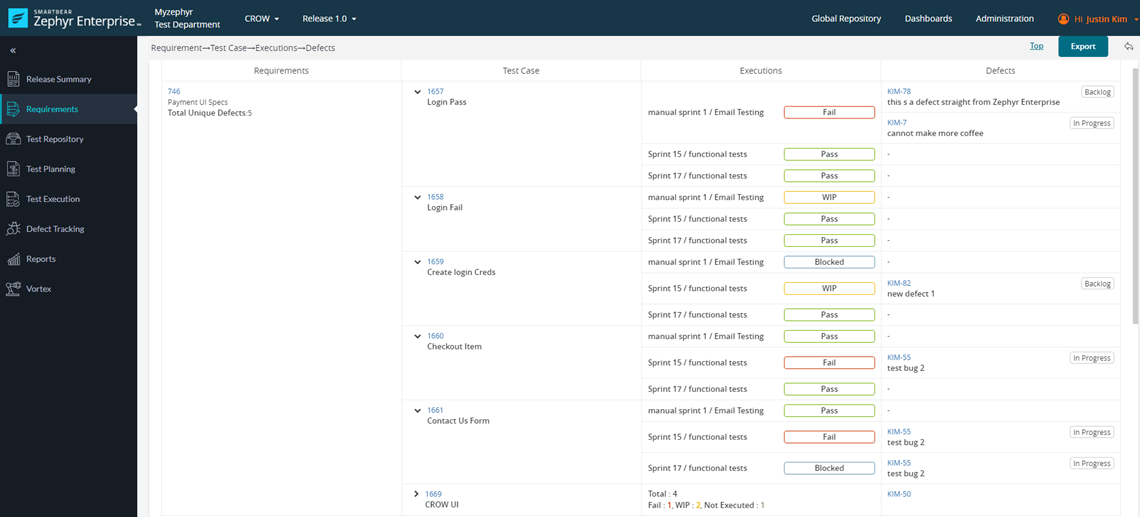Test Management 101: Traceability
Testing is more than a checkpoint; it’s a cornerstone of quality and efficiency. Thorough testing ensures your application functions correctly and lowers costs by preventing errors and reducing downtime. Effective testing also boosts user satisfaction, directly contributing to a stronger bottom line.
In small applications, pinpointing issues and tracking requirements is manageable with spreadsheets. As the application gets more complex, so does everything else. A larger app requires multiple development teams to work in parallel – so you’ll have different versions of the product being tested for different things. In that scenario, keeping track with a spreadsheet can feel impossible. This is the point where teams are better off investing in a good test management product.
One of the major advantages of using a comprehensive test management tool is improved traceability. Test traceability links each test to specific requirements, ensuring the application meets all necessary criteria. This not only verifies functionality but also streamlines the testing process by providing clear visibility into what needs to be tested and why.
Advance Your Testing with Test Traceability
Three ways traceability supports development:
Forward traceability
The ability to go from requirement to test case. Forward traceability is important as Product Owners plan new features and products, it ensures all requirements are covered by appropriate test cases. Zephyr Enterprise’s bi-directional Jira integration streamlines this process, allowing for seamless tracking and linking of requirements to their respective test cases directly within Jira.
Backward traceability
The ability to go from test case back to the application is crucial for quality assurance. Backward traceability allows for discovery and detailed bug reporting. The better the bug report, the more context a developer gets about the error, leading to faster and more accurate fixes.
Enhancement
When new features are added to an existing product, you merge new code into the existing codebase. You’ll need to extend test coverage to include this additional functionality. Traceability helps ensure that all new features are thoroughly tested and integrated seamlessly.
Understanding the Limits of Test Traceability
Now you’re probably thinking, “test traceability sounds great! Let’s strive for 100% traceability in our organization!” While that would be ideal, achieving 100% traceability requires a level of work and attention that’s just not physically possible today. There’s no way to deliver timely software with complete test coverage.
However, when you implement a well-defined testing strategy with precise test case tracing, you’ll set the stage for success. Traceability lets you quickly test specific areas of your application whenever you’re adding functionality or making fixes. This ensures what you just built can be verified in your test cases. This approach will enable your teams to build and release faster.
Maximize Your Testing Efficiency with Zephyr Enterprise’s Advanced Features
Zephyr Enterprise offers sophisticated traceability reports that show the links between the requirements, tests, test executions, and any issues created to record defects identified during testing. Additionally, Zephyr Enterprise’s AI capabilities can provide predictive analytics and automated insights, further optimizing your testing process.

Zephyr Enterprise maps requirements, test cases, execution results, and defects in one place for better traceability. Give it a spin by downloading a free trial.